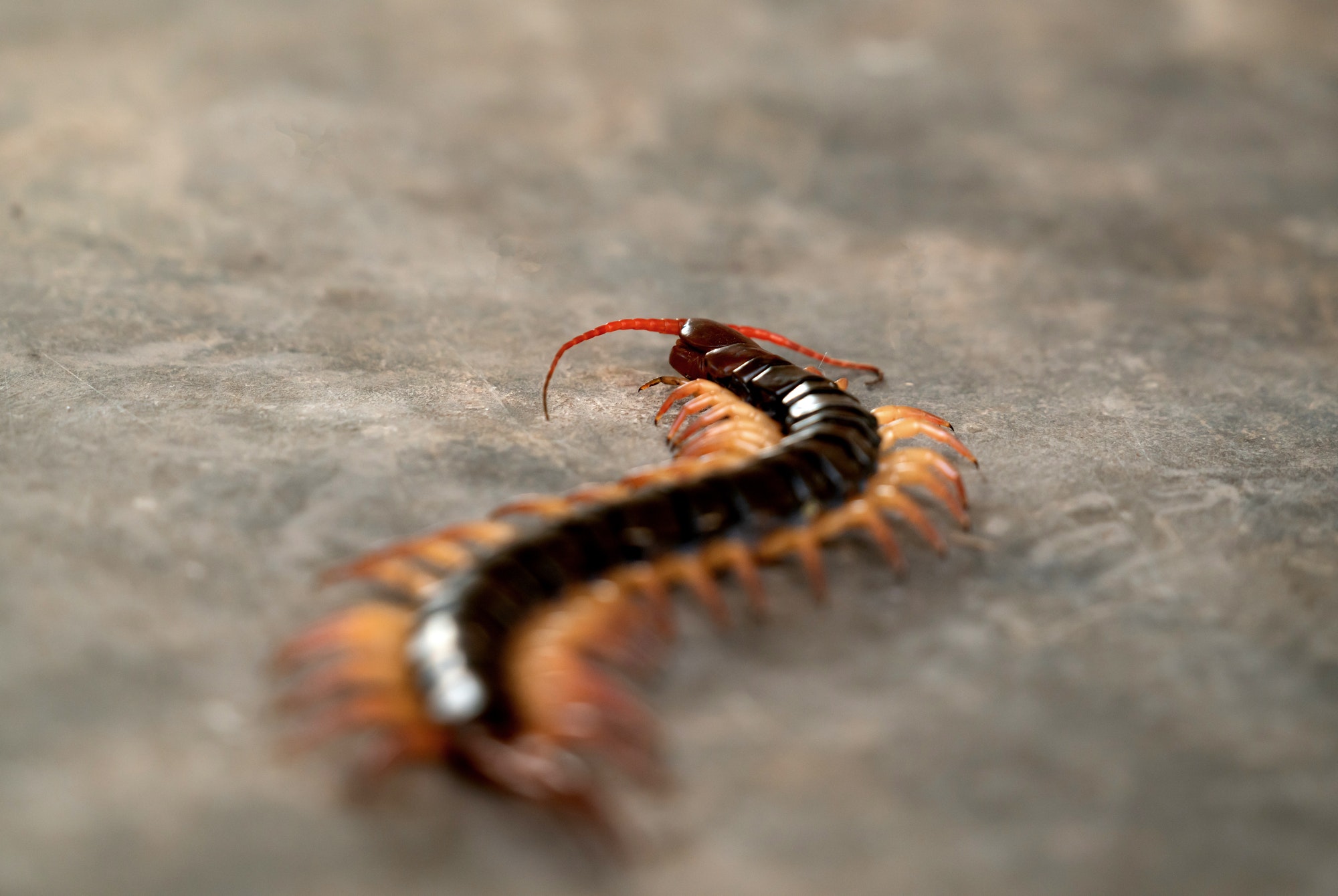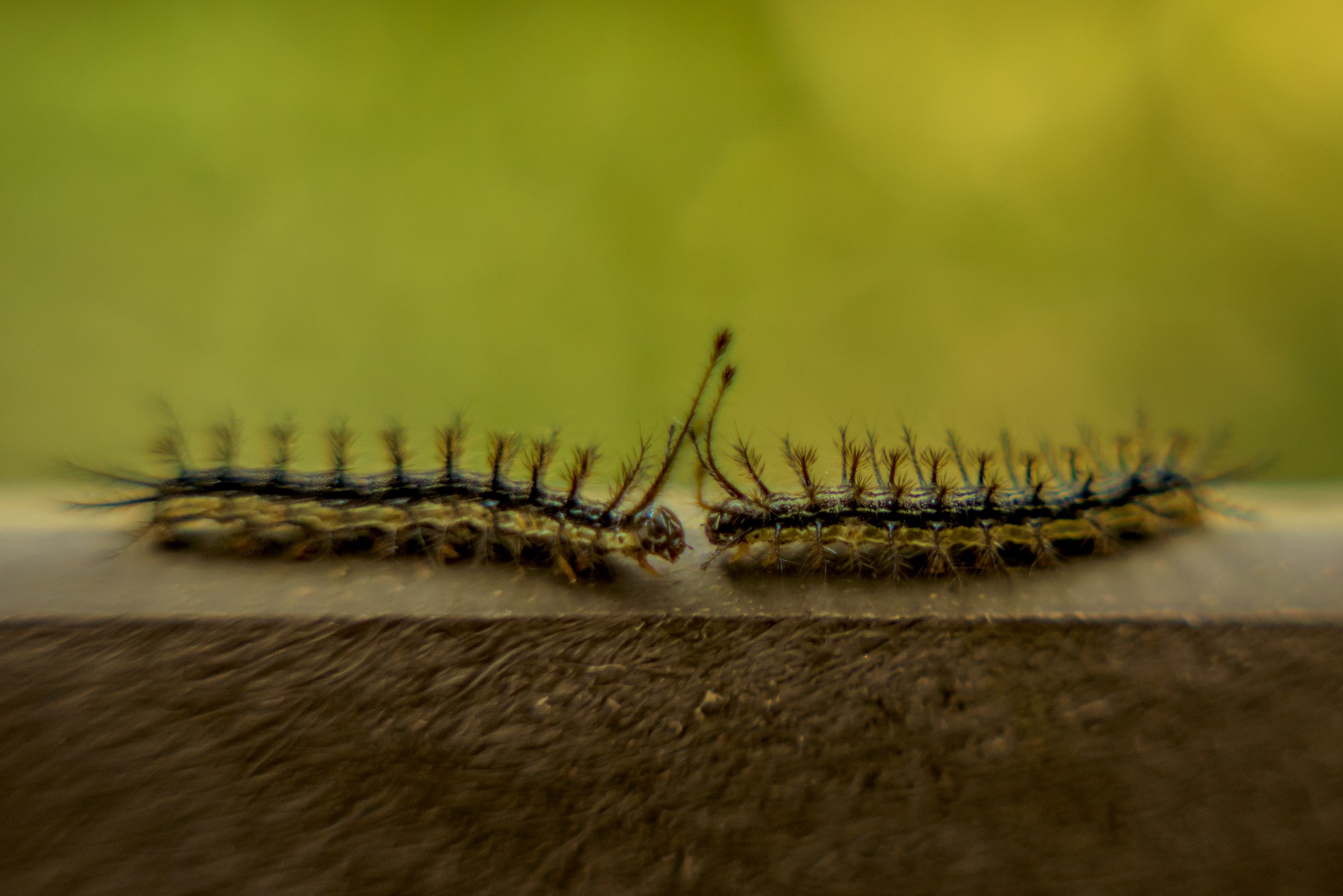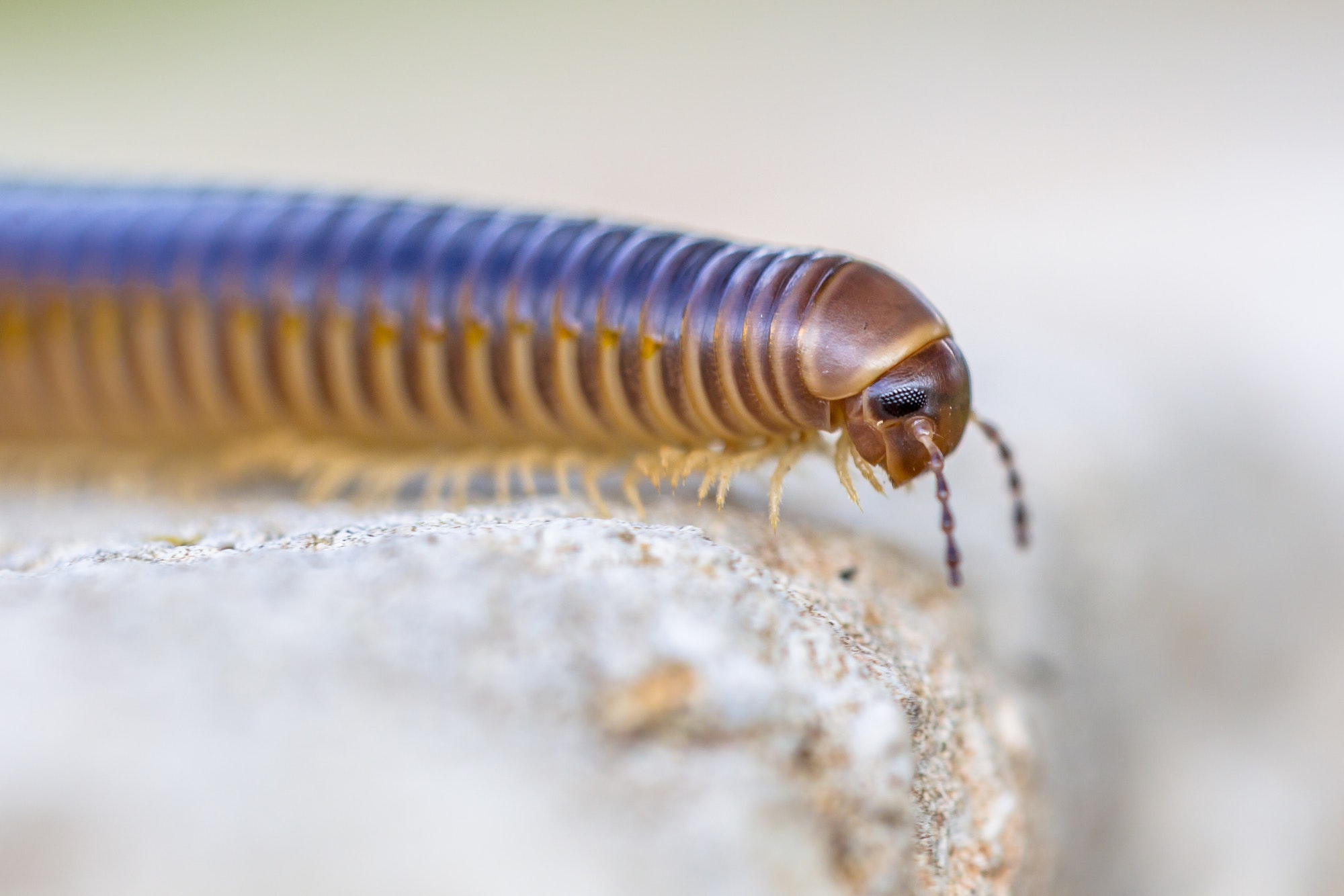Are Millipedes Poisonous?
No, millipedes are not poisonous. But their look-alike’s, centipedes, are. Millipedes can be a confusing bug. Maybe that’s because nobody wants to get close enough to look at them! But they have a worse reputation than they deserve because of their resemblance to their cousins, the centipedes. Actually, the two are quite different. First let’s take a look at centipedes.
Centipedes make up the scientific class Chilopoda. Each of their many body segments contains a pair of legs, from which they get their name ‘centipede’, meaning ‘hundred footed insect’. They may have anywhere from 30 to 342 legs, but, as an interesting fact, always an odd number of pairs (i.e., 20 pairs and never 21). However, the common house centipede has only 30 legs, and you’ll probably never see a centipede with anywhere near 100.

Centipedes are often shorter than millipedes, but faster and fiercer. They do have poison, which they produce in a gland in their head and store in their first pair of legs, which work as claws. These poisonous claws are more than simply defence tools, since centipedes are hunters and kill and eat insects, worms and even small animals. They hunt at night and live in damp, dark places, sometimes underground.
North American centipedes are generally not more than a few centimetres long, and though they will only bite in self-defence the bites of some species are painful. In the tropics, centipedes can grow up to a foot long and their bite can even be dangerous. Overall, the centipede is hardly the sort of acquaintance you’d like to make! Unfortunately, centipedes are more likely to be found indoors than millipedes, because of their eating habits – there are often small insects to be found and caught indoors, and plenty of dark places to hide during the day.

Millipedes on the other hand are quiet, slow-moving bugs. They make up the scientific class Diplopoda. Their name comes from the Latin for “thousand feet” and though no millipede has a thousand feet, they have two pairs of legs in each segment instead of just one like a centipede. Like centipedes, they are found all over the world, and they vary in size dramatically from less than ⅛ of an inch to over 8 inches long.
Millipedes are much more round and worm-like than centipedes, which are basically flat. The segments of a millipede are also much less distinct than those of a centipede. They characteristically roll up into a ball when threatened, something the fierce centipede would never do. Millipedes live off decaying plant matter, and (this time like the centipede) prefer a moist, dark habitat – a rotting log or old pile of leaves suits them perfectly. Millipedes generally stay outside, though they may occasionally stray in, so unless you’re walking in the woods, don’t worry about meeting them. And certainly don’t worry about getting poisoned – they probably wouldn’t bite you if they could!








